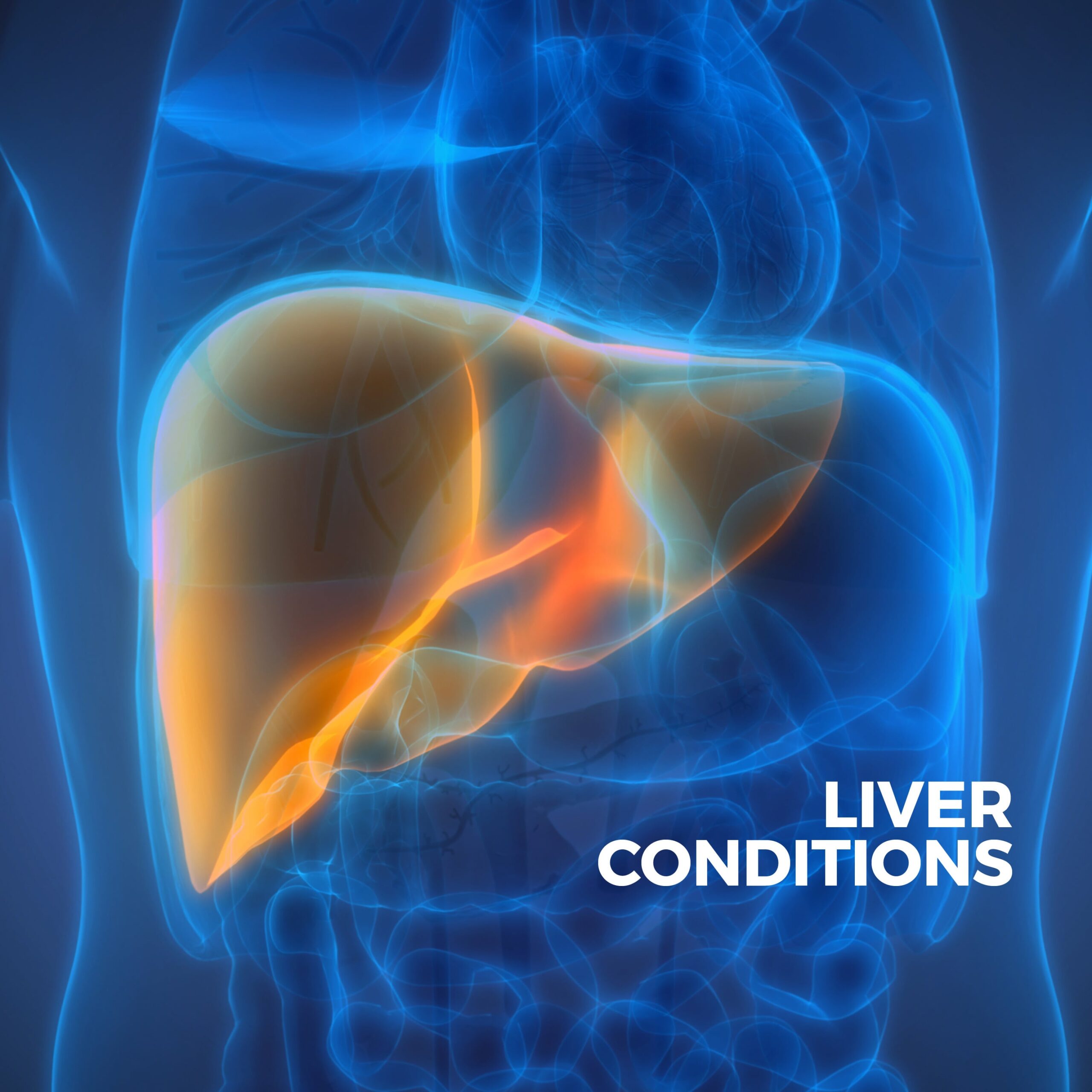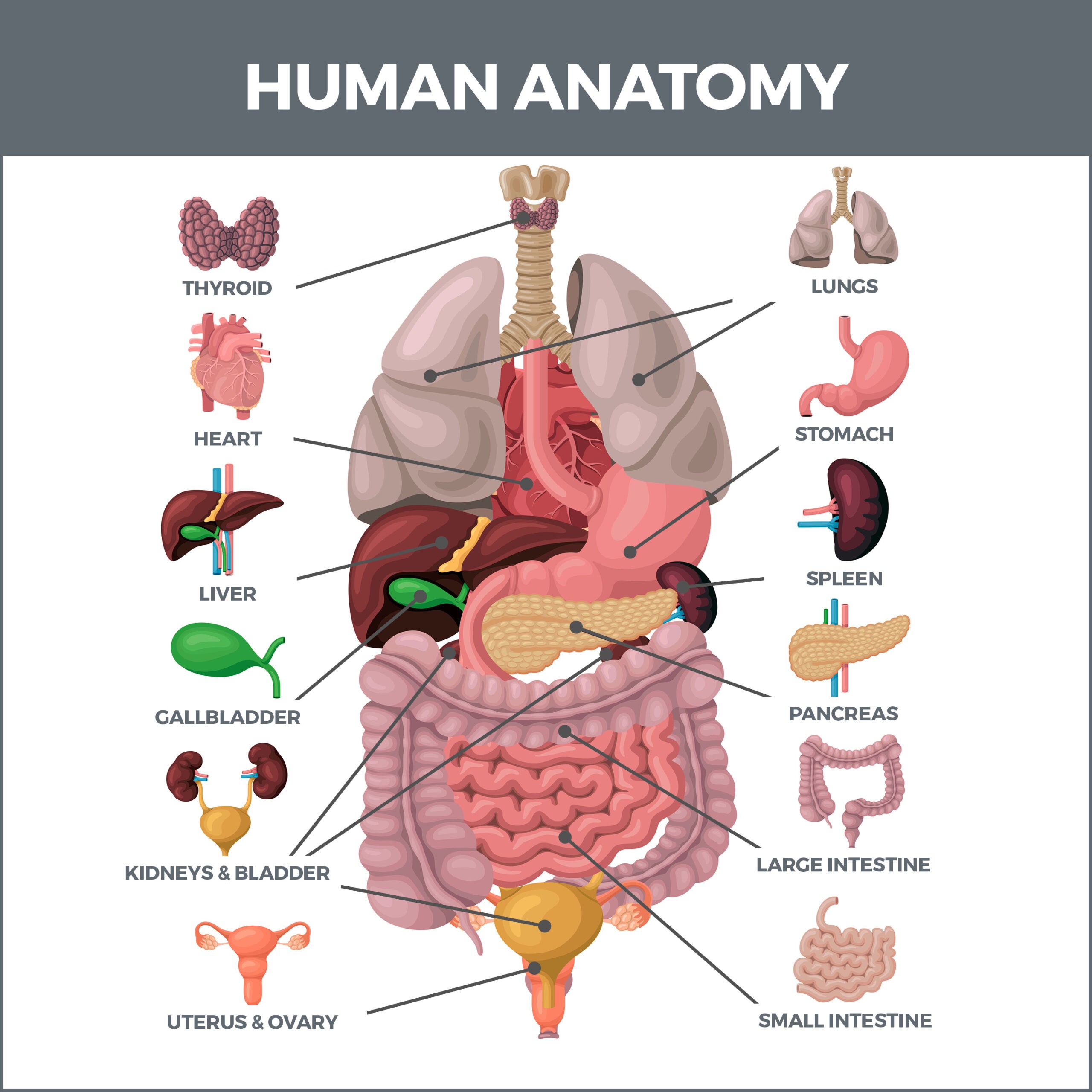
General Liver Conditions
The liver is your body’s largest internal organ (about the size of a football and weighing about three pounds). It sits on the right side of your abdomen on top of your right kidney, intestines, and stomach. Five hundred functions have been associated with the liver, including flushing toxins, helping digestion, producing bile, metabolizing nutrients, and regulating blood clotting.
Diseases can interrupt or stop these functions. There are more than 100 liver diseases, but the most common are:
1. Primary Biliary Cholangitis
This immune system disease is characterized by the body attacking its bile ducts – small tubes that carry fluid produced in the liver. Bile’s responsibility is to break down fats into fatty acids to be digested easier.
When these ducts are damaged, bile backs up inside your liver. This can lead to scarring, liver failure and cirrhosis.
Women tend to be more susceptible to primary biliary cholangitis than men.
2. Primary Sclerosing Cholangitis
Like primary biliary cholangitis, primary sclerosing cholangitis is an inflammatory rather than an immune system condition. It also gradually scars the bile ducts. This scarring causes the ducts to harden and narrow, resulting in a bile build-up. The obstruction in your bile ducts accumulates fluid, making the organ struggle to work correctly. This disease can cause liver failure or cirrhosis and requires a transplant.
3. Hepatitis
Hepatitis is an inflammatory condition caused by hepatitis viruses (A, B, and C). These viruses can spread through shared needles, unprotected sex, contact with other people’s blood, or contaminated food and water.
The inflammation can also have non-infectious causes such as drugs, obesity, or heavy drinking. If left untreated, hepatitis can lead to liver failure or cancer.
4. Cirrhosis
When the liver sustains long-term damage, it can become permanently scarred and unable to function. As more and more scars replace its healthy areas, the organ can’t function normally. The scar tissue hinders its processing of hormones, nutrients, and toxins. It also diminishes protein production. Late-stage cirrhosis can be fatal.
5. Ascites
When cirrhosis progresses, the liver may leak fluid into the abdominal cavity. As liquid builds up, the belly swells, causing an increase in waist size that can look like a pregnancy. This water retention may even interfere with walking, eating, and drinking. Accumulation of fluid can also induce shortness of breath since the fluid pushes the diaphragm up, compressing the lower part of the lungs.
In some severe cases, up to three gallons of fluid have been known to be retained.
6. Hemochromatosis
Hemochromatosis, or iron overload, is an inherited condition that causes your liver to store too much iron. Surplus iron can seriously damage it, leading to cirrhosis. The intestines absorb iron from food, but it is known as hemochromatosis when your body absorbs too much iron and stores it in your liver.
Women are prone to developing hemochromatosis after menopause when they no longer lose iron through menstruation or pregnancy.

7. Liver Failure
This disease occurs when the organ has sustained irreparable damage. The chronic version of this condition typically progresses over many years until the organ stops working. The other type of failure (acute) happens when it suddenly stops working within a few days or weeks. Sometimes, failure can happen within 48 hours.
8. Wilson’s Disease
Wilson’s Disease is a rare congenital disorder that causes the liver to accumulate excess copper. Copper is usually absorbed from your food, and the excess is excreted. The liver of someone who has this condition doesn’t discharge copper into bile which damages the organ. If untreated, Wilson’s Disease can be fatal.
9. Portal Hypertension
Portal Hypertension is an abnormal pressure increase in the portal vein that transports blood from the digestive system to the liver. This elevated pressure is caused by a blockage in the organ’s blood flow.
When the pressure in the portal vein increases, large veins develop across the stomach and esophagus to bypass the blockage. The strain on these blood vessels can cause them to weaken and easily bleed.
This condition is usually caused by cirrhosis.
10. Alcohol-Related Fatty Liver Disease (Hepatic Steatosis)
Hepatic Steatosis refers to excess fat stored in the organ. It leads to an enlarged liver and is caused by heavy alcohol use. A healthy organ breaks down alcohol but drinking more than it can handle can critically damage it.
This condition is the initial stage of alcohol-related liver disease. With continued excessive drinking, it progresses to alcoholic hepatitis and cirrhosis.
11. Alpha1-Antitrypsin Deficiency
Alpha1-antitrypsin (Alpha-1) is a protein produced by the liver to protect the lungs from infections and irritants. When Alpha-1 proteins are deficient or deformed, they accumulate in the organ and scar its cells, leading to cirrhosis and cancer.
If an inadequate amount of Alpha-1 is released into the bloodstream, the lungs can be left unprotected. This vulnerability can lead to obstructive pulmonary disease – a lung disease that makes breathing difficult. Alpha1-Antitrypsin Deficiency is genetic.
12. Liver Cancer (Hepatocellular Carcinoma)
Hepatocellular Carcinoma is a type of cancer that originates in your liver, unlike secondary tumors that form in other parts of the body and spread to the organ. Risk factors for this type of cancer include hepatitis B or C, anabolic steroids, obesity, and heavy drinking.
It’s the most common cause of death for people with cirrhosis. Hepatocellular carcinoma grows slowly in its early stages and can be cured with early detection.

13. Bile Duct Cancer
This disease affects the tubes that transport bile. There are two types:
- Intrahepatic Bile Duct Cancer – This type of cancer begins inside the bile ducts. It is a relatively uncommon form of bile duct cancer.
- Extrahepatic Bile Duct Cancer – This malignancy grows in the external bile ducts. There are two types: Perihilar bile duct cancer and Distal bile duct cancer.
This cancer grows in the section of bile ducts that travel through the pancreas and join the small intestine.
14. Primary Hyperoxaluria
Primary Hyperoxaluria is a rare disease caused by a mutated gene. This gene causes oxalate (a natural chemical found in your body and certain foods) to build up and damage your kidneys. Your liver does not make enough of a specific protein to prevent oxalate build-up with this condition.
15. Drug and Supplement-Related Disease
There’s a misconception that over-the-counter drugs aren’t dangerous. But they can injure or even destroy your liver. For example, excessive amounts of acetaminophen (Tylenol, Benadryl, Midol) can trigger the failure of the organ.
Be wary of herbal supplements too. Although it seems contradictory that something natural could be harmful to you, herbal supplements can cause toxic liver disease. Be skeptical of remedies containing (among others):
- Kava.
- Ephedra.
- Black cohosh.
- Saw palmetto.
Also, high doses of vitamins, such as vitamin A, can damage your liver as well.
These substances can become deadly when combined with alcohol.
16. Hepatic Adenoma
A hepatic adenoma is a benign tumor. Anyone can get this, but it’s most common in women who take high-dose estrogen pills for extended periods. Hepatic adenoma can also develop if you’re obese or have metabolic syndrome – a cluster of risk factors that can raise your susceptibility to diabetes and heart disease. These tumors are more likely to become malignant in men.
17. Liver Encephalopathy
When the liver is working correctly, it flushes toxins such as ammonia and heavy metals from the body. When it malfunctions, these substances build up in the blood and travel to the brain, resulting in symptoms such as confusion, forgetfulness, and poor concentration.
In its early stages, this condition can be treatable. If it worsens, the disease may become untreatable.
Approximately 50% of people with cirrhosis get encephalopathy.
18. Gilbert’s Syndrome
Gilbert’s Syndrome is a harmless, inherited condition that prevents the liver from processing bilirubin. Bilirubin is a waste product that forms during the breakdown of old red blood cells and is flushed out by the liver.
Gilbert’s Syndrome hinders proper bilirubin breakdown, resulting in jaundice (yellowing of the whites of the eyes and skin). Usually, Gilbert’s Syndrome is non-threatening and will come and go on its own.
Contact Us
Are you or one of your loved ones have symptoms or are suffering from liver disease? Contact us today. The team of professionals at GastroMD looks forward to working with you. We are one of the leading gastroenterology practices in the Tampa Bay area. We perform a host of diagnostic procedures using state-of-the-art equipment in a friendly, comfortable, and inviting atmosphere where patient care is always a top priority.



